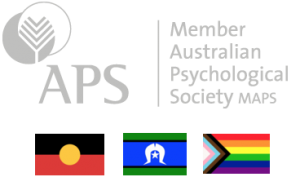Mental health is a fundamental component of overall health, significantly affecting individuals’ quality of life and well-being. For First Nations people in Australia, mental health issues are particularly prevalent and complex, deeply rooted in historical, cultural, and socio-economic contexts. Statistics from the Australian Institute of Health and Welfare 2018–19 reveal that over a third (37%) of First Nations people reported having a current mental health condition, with a higher prevalence among females (42%) compared to males (30%). Additionally, 12% of Islanders reported experiencing at least seven life stressors, such as the death of a family member, serious illness or disability, inability to find work, and alcohol and drug-related problems. These statistics highlight the pressing need to address the mental health challenges faced by these communities.
Historical and Cultural Context
The mental health of First Nations people cannot be fully understood without considering the historical impact of colonization. The dispossession of land, disruption of traditional lifestyles, and policies such as the forced removal of children (Stolen Generations) have inflicted significant inter-generational distress. The ongoing psychological distress and social disadvantage created by historical injustices and experienced by several Indigenous generations continue to be a prevalent problem that affects the mental health of First Nations people today (Sutherland & Adams, 2019).
Socio-economic Factors
First Nations people often experience significant socio-economic disadvantages, including lower income levels, higher rates of unemployment, and substandard housing conditions. These factors contribute substantially to mental health problems. Financial stress, lack of access to quality education and healthcare, and inadequate living conditions can exacerbate feelings of hopelessness and despair, leading to higher rates of mental health conditions. The inability to secure employment is particularly distressing, as it not only affects financial stability but also self-esteem and a sense of purpose.
Gender Disparities in Mental Health
The higher prevalence of mental health conditions among First Nations females (42%) compared to males (30%) is a critical issue. Several factors contribute to this disparity, including higher rates of domestic violence, caregiving responsibilities, and socio-economic stressors. Indigenous women are disproportionately affected by domestic violence and abuse, which can lead to severe psychological distress. Additionally, the burden of caregiving, often undertaken with limited resources and support, can contribute to elevated levels of stress and anxiety among women.
Life Stressors
According to a survey conducted by Trewin and Madden (2005) and published by the Australian Bureau of Statistics, 12% of respondents reported experiencing at least seven life stressors, including the death of a family member, serious illness or disability, inability to find work, and alcohol and drug-related problems, underscores the severe and multifaceted stressors impacting these communities. Such cumulative stressors can severely impact mental health, leading to conditions such as depression, anxiety, and substance abuse disorders. The loss of family members and the prevalence of serious illness or disability are particularly distressing, contributing to a pervasive sense of grief and loss.
Barriers to Accessing Mental Health Services
Despite the high prevalence of mental health issues, First Nations people face substantial barriers to accessing appropriate mental health care. These barriers include geographical isolation, cultural insensitivity within mainstream healthcare services, and a lack of trust in healthcare providers due to past negative experiences (Sutherland & Adams, 2019). Additionally, the stigma associated with mental health issues can discourage individuals from seeking help, further exacerbating their conditions. Given that the fear of stigma and lack of trust can be barriers to accessing mental health services, First Nations people may choose to use digital mental health resources that were specifically designed for this population with cultural sensitivity in mind. Resources can be downloaded free of charge on the website of the Australian Institute of Health and Welfare.
The Way Forward
To improve mental health outcomes for First Nations people, it is crucial to adopt a holistic approach that addresses the root causes of mental health issues while providing accessible and culturally appropriate care (Wilson & Waqanaviti, 2021). Policymakers must prioritize funding for mental health services in indigenous communities and support programs that promote social and emotional well-being. Training healthcare providers in cultural competence is also essential to bridge the gap between indigenous communities and mental health services. Addressing the mental health needs of First Nations people requires culturally sensitive approaches that respect and incorporate traditional practices and beliefs. Programs emphasizing the importance of connection to land, culture, and community as essential components of mental health and well-being have shown promise (Dudgeon et al., 2014).
In conclusion, the mental health challenges faced by First Nations people are complex and deeply rooted in historical, socio-economic, and cultural factors. The high prevalence of mental health conditions, particularly among women and those experiencing multiple life stressors, calls for urgent and culturally sensitive interventions. By addressing these challenges, society can work towards better mental health outcomes and resilience within indigenous communities.
The Centre for Clinical Psychology in Melbourne offers counselling services to help people of different ethnicities and cultural backgrounds with mental health issues to find a sense of relief and strategies to get better. Book an appointment today by calling 03 9077 0122 or visiting https://ccp.net.au/booking/.
References
Australian Institute of Health and Welfare (2023). Indigenous Mental Health & Suicide Prevention. https://www.indigenousmhspc.gov.au/topics/mental-health#relatedpublications
Dudgeon, P., Milroy, H., & Walker, R. (2014). Working together: Aboriginal and Torres Strait Islander mental health and wellbeing principles and practice. Telethon Kids Institute, Kulunga Aboriginal Research Development Unit, Department of the Prime Minister and Cabinet (Australia).
Dudgeon, P., Walker, R., Scrine, C., Shepherd, C., Calma, T., & Ring, I. (2014). Effective strategies to strengthen the mental health and well-being of Aboriginal and Torres Strait Islander people.
Sutherland, S., & Adams, M. (2019). Building on the definition of social and emotional wellbeing: an Indigenous (Australian, Canadian, and New Zealand) viewpoint. ab-Original: Journal of Indigenous Studies and First Nations and First Peoples’ Cultures, 3(1), 48-72.
Trewin D., & Madden R. (2005). The health and welfare of Australia’s Aboriginal and Torres Strait Islander peoples. Canberra: Australian Bureau of Statistics.
Wilson, R. L., & Waqanaviti, K. (2021). Navigating First Nations Social and emotional wellbeing in mainstream mental health services. Yatdjuligin: Aboriginal and Torres strait islander nursing and midwifery care, 281-306.



